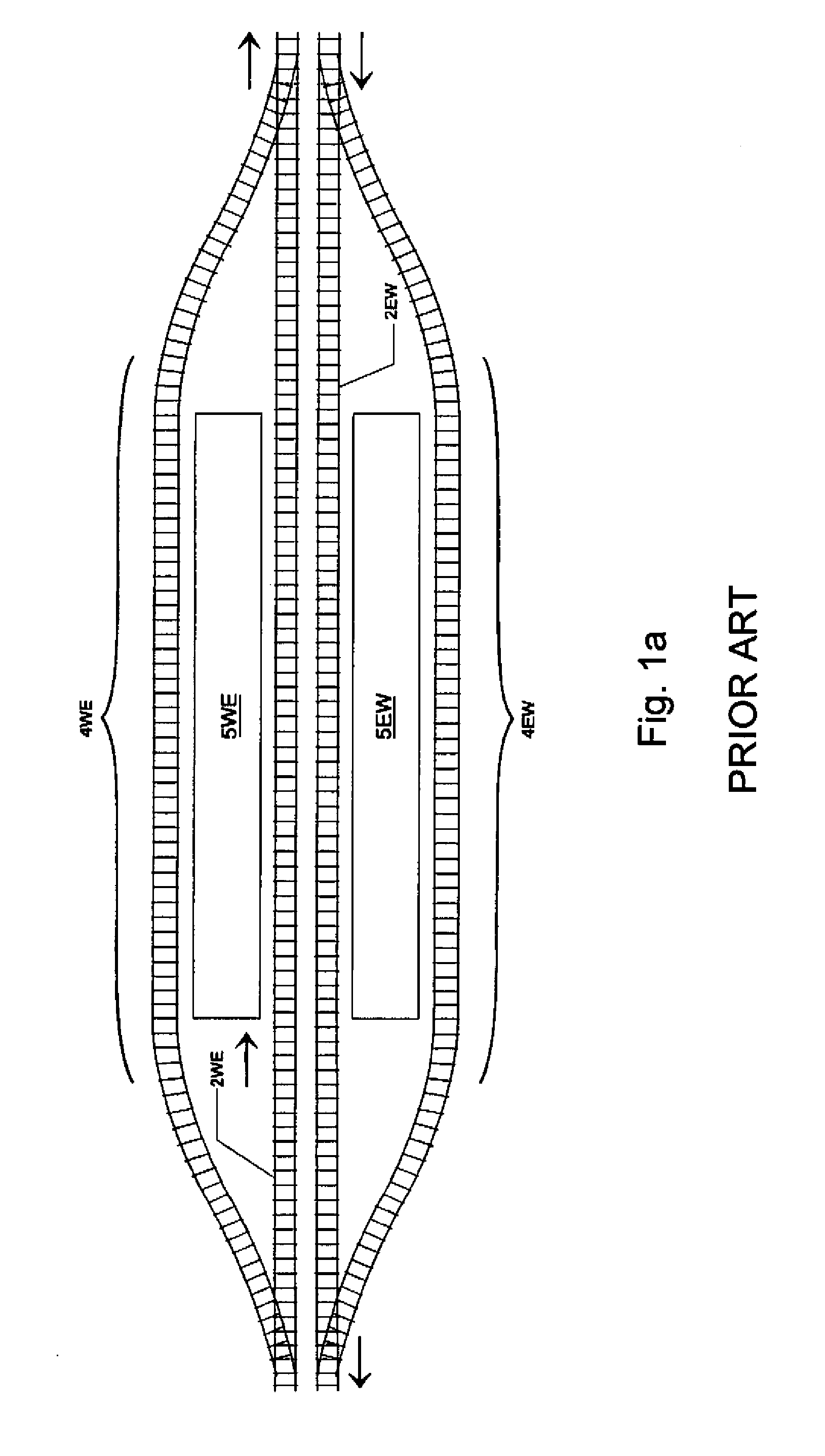Synchronized Express and Local Trains for Urban Commuter Rail Systems
a technology of urban commuter rail and express trains, applied in the direction of distance measurement, instruments, ways, etc., can solve the problems of underutilization of the subway system, inability to recover huge infrastructure costs, and inhibiting the construction of additional capacity, so as to reduce the travel time of all passengers and optimize the utilization of subway system resources.
- Summary
- Abstract
- Description
- Claims
- Application Information
AI Technical Summary
Benefits of technology
Problems solved by technology
Method used
Image
Examples
Embodiment Construction
[0054]This invention will be described in connection with its embodiments, as implemented into an urban commuter rail system in which at least a significant portion of the system is an underground subway system. These embodiments are described in this specification because it is contemplated that this invention will be especially beneficial when utilized in such an application. However, it is contemplated that this invention can also provide similar important benefits if implemented in other applications and environments. Accordingly, it is to be understood that the following description is provided by way of example only, and is not intended to limit the true scope of this invention as claimed.
[0055]FIG. 2a schematically illustrates the context of embodiments of this invention in connection with subway line SLINE, which travels from an origin to a terminus. For purposes of this contextual description, subway line SLINE will be discussed in connection with a single direction of trav...
PUM
 Login to View More
Login to View More Abstract
Description
Claims
Application Information
 Login to View More
Login to View More - R&D
- Intellectual Property
- Life Sciences
- Materials
- Tech Scout
- Unparalleled Data Quality
- Higher Quality Content
- 60% Fewer Hallucinations
Browse by: Latest US Patents, China's latest patents, Technical Efficacy Thesaurus, Application Domain, Technology Topic, Popular Technical Reports.
© 2025 PatSnap. All rights reserved.Legal|Privacy policy|Modern Slavery Act Transparency Statement|Sitemap|About US| Contact US: help@patsnap.com



